The current market offers various fabric types with different characteristics, advantages, and disadvantages. Join Fashion Bandung to learn about crepe fabric and its applications in everyday life. Don’t miss this article!
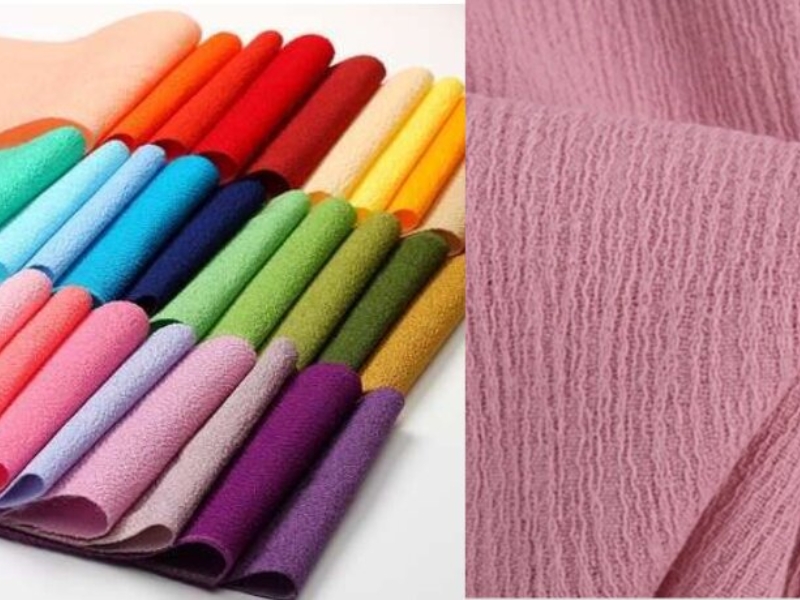
Crepe fabric refers to a type of textile that is characterized by its distinctive crinkled texture. It is usually made from natural fibers such as silk, wool, or cotton, but synthetic fibers like polyester can also be used. The crepe fabric is created by using a unique weaving technique or by using chemicals to treat the fibers, resulting in a surface with a slightly bumpy or pebbled appearance.
This fabric is known for its versatility and is used in a wide range of clothing items, including dresses, skirts, blouses, and scarves. Due to its drape and flow, crepe fabric is often chosen for garments that require movement or a tailored fit. It has a lightweight and breathable nature, making it suitable for both summer and winter wear.
Crepe fabric comes in various weights and finishes. It can be smooth, textured, or matte, depending on the specific type and processing techniques used. This fabric is known for its wrinkle-resistant properties, which makes it convenient for travel or everyday wear.
Overall, crepe fabric is highly regarded for its unique texture, durability, and versatility, making it a popular choice in the fashion industry.
About crepe fabric
To enhance readers’ understanding of crepe fabric, let’s delve into the concept together. First and foremost, what exactly is crepe fabric? Crepe fabric is a type of textile known for its unique texture and appearance. It is characterized by its crinkled or pebbled surface, which is achieved through a specific weaving method or the use of highly twisted yarns. Crepe fabric can be made from a variety of fibers, including silk, wool, synthetic materials, or a blend of different fibers.
Now, let’s explore the origin of crepe fabric. The history of crepe fabric dates back centuries, with evidence of its existence found in various ancient cultures. The word “crepe” is believed to have originated from the French word “crespe,” which means “crimped” or “frizzed.” The fabric gained popularity in Europe during the 19th century, particularly in France and England, where it was commonly used for creating elegant, draping garments.
Crepe fabric has since transcended borders and has become a staple in the fashion industry worldwide. Its versatile nature allows it to be used for a wide range of clothing items, including dresses, blouses, skirts, and even accessories. The fabric’s distinct texture and ability to drape gracefully on the body make it a favorite choice for creating flowing and feminine garments.
In conclusion, understanding crepe fabric involves recognizing its distinctive texture and appearance, as well as its historical significance and widespread use in the fashion industry. By delving into the concept of crepe fabric, we gain a deeper appreciation for this versatile and timeless material.
What is crepe fabric?
Crepe fabric is known for its excellent elasticity and unique structure. It is crafted from a combination of cotton and wool using the crepe method, resulting in a smooth surface and moderate drape. Unlike other ordinary fabrics, crepe fabric has a distinctive “wrinkled” appearance due to its raised surface and multi-fiber structure. The intertwining and twisting of fibers within this fabric create gaps and empty spaces, giving it a special structure and making it highly versatile.
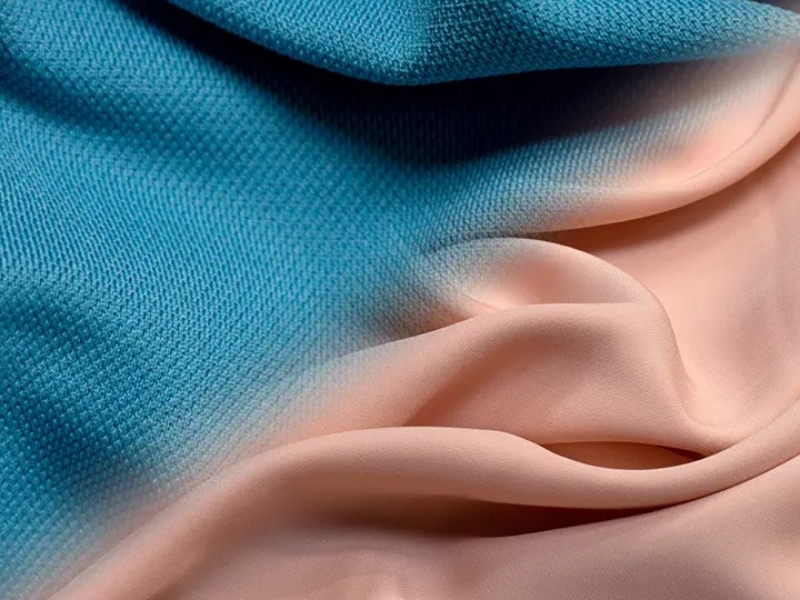
Can you please provide additional information about crepe fabric?
The crepe fabric is highly regarded for its exceptional softness and excellent elasticity. As a result, products crafted from this material offer great flexibility in movement, ensuring optimal comfort. In addition, the fabric’s embossed surface and distinct folds contribute to its unique and sharp appearance. This advantage has led to the crepe fabric becoming a popular choice in both the fashion industry and interior decoration.
Origin of crepe fabric
Historical records indicate that crepe fabric has been in existence since ancient Greece. However, it wasn’t until the 19th century that this particular fabric gained significant popularity and widespread usage in Western countries.
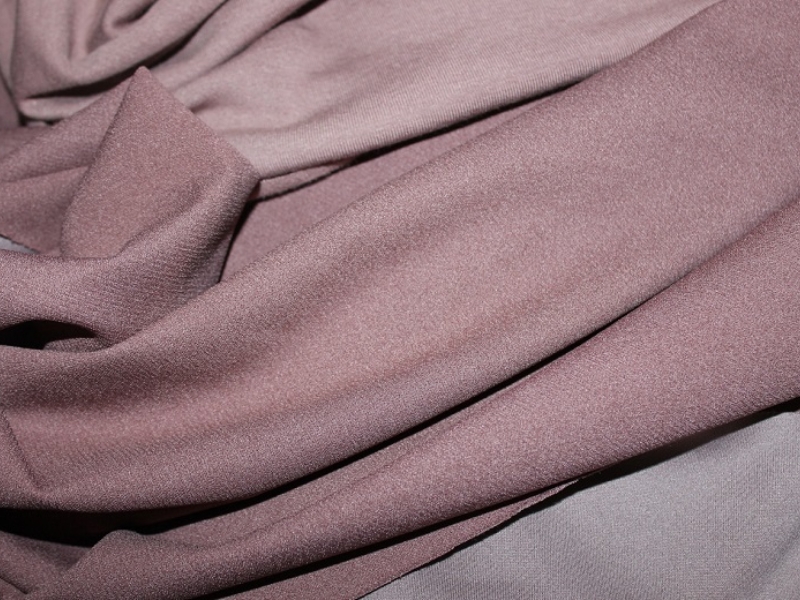
The origin of crepe fabric can be traced back to its development in ancient civilizations. This fabric, known for its distinctive texture and crinkled appearance, has a rich history dating back centuries.
Crepe fabric was initially created using silk fibers, which were laboriously woven together to create a lightweight and delicate material. The technique of weaving the fibers in a way that resulted in the fabric’s distinctive texture was a highly skilled process.
Over time, the popularity of crepe fabric spread to different parts of the world and variations of this fabric were developed. Different cultures began using various types of fibers, such as cotton, rayon, or wool, to create crepe fabric. This allowed for the fabric to be more accessible and affordable to a wider range of people.
In the 20th century, crepe fabric experienced a surge in popularity due to its versatility and unique drape. The fabric became a favorite among fashion designers who appreciated its ability to create elegant and flowing garments. Crepe fabric was particularly favored for eveningwear, bridal gowns, and high-end fashion.
Today, crepe fabric continues to be a beloved choice in the fashion industry. With advancements in technology and manufacturing processes, crepe fabric is now available in a wide range of colors, prints, and weights. It is used for a variety of clothing items, including blouses, dresses, trousers, and even accessories.
The origin of crepe fabric may lie in ancient civilizations, but its enduring appeal and versatility have ensured its place in contemporary fashion.
The application of crepe fabric varies across different cultures. In India, women use this fabric to create their traditional costumes. However, in Greece, women wear crepe fabric specifically during funeral occasions.
Courtaulds, a renowned company, introduced and popularized the use of crepe fabric. The company successfully launched various products made from crepe fabric, which were met with great enthusiasm by consumers. In addition to producing crepe fabric, Courtaulds also innovated and employed numerous weaving styles to offer customers a wide range of choices. This diversity in crepe weaving techniques added further options for customers to select from.
Important characteristics of crepe fabric that you should be aware of.
Crepe fabric is highly regarded for its exceptional elasticity, making it an ideal choice for clothing items. Wearing products made from crepe fabric ensures comfort and ease of movement for the wearer. Moreover, this fabric material boasts excellent durability, effectively reducing the likelihood of pants tearing or becoming deformed. Therefore, products made from crepe fabric, such as men’s shirts, are known for their longevity and suitability for frequent use. This fabric truly exemplifies quality and reliability.
The fabric of this outfit has a smooth and soft surface that feels gentle against the skin. Additionally, the lightweight material and excellent ventilation of this attire ensure that the wearer stays comfortable and cool, even on scorching hot summer days.
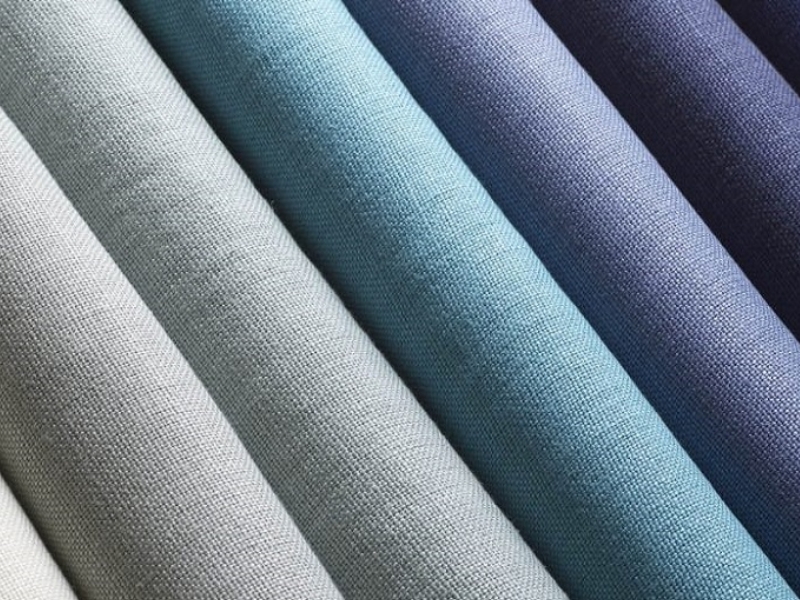
Here are some important details about crepe fabric that you should be aware of:
Crepe fabric is a type of textile known for its unique characteristics. It is lightweight and has a distinct crinkled or wrinkled texture, which sets it apart from other fabrics. This texture is achieved by using highly twisted yarns during the weaving process.
One of the key features of crepe fabric is its drapeability. It has a natural flow and smoothness, making it ideal for creating fluid and graceful garments. The fabric has a soft, luxurious feel against the skin, adding to its overall appeal.
Crepe fabric is also known for its durability and resilience. The twisted yarns used in its construction make it resistant to wrinkles and easy to recover its shape, even after extended wear. This quality makes crepe fabric a preferred choice for both everyday clothing and formal attire.
Another advantage of crepe fabric is its breathable nature. It allows air to circulate freely, keeping the wearer comfortable even in warm weather. This makes crepe fabric a suitable option for summer clothing or in regions with hot climates.
Additionally, crepe fabric is versatile and can be used to create a wide range of garments. It is commonly used in making dresses, blouses, skirts, and even suits. The fabric’s ability to hold various types of prints and colors also adds to its popularity in fashion design.
While crepe fabric offers numerous benefits, it does require special care during cleaning. It is recommended to hand wash or dry clean crepe garments to maintain their texture and shape. Ironing on low heat or steaming can help remove any remaining wrinkles.
In summary, crepe fabric is a lightweight and crinkled textile that provides excellent drape, durability, and breathability. It is a versatile choice for creating an array of fashionable garments and requires specific care to preserve its unique characteristics.
Crepe fabric is known for its unique and distinctive feature of folds and grooves on its surface. These folds and grooves give clothes made from this fabric a striking and exceptional appearance. Moreover, crepe fabric is highly appreciated for its ability to maintain its shape and resist wrinkling or deformation for a longer period of time.
In general, crepe fabric offers several advantages due to its unique properties. Firstly, it is known for its exceptional elasticity, allowing it to stretch and flex without losing its shape. This makes it ideal for garments that require flexibility and movement, ensuring a comfortable fit for the wearer.
Furthermore, crepe fabric is highly durable, making it capable of withstanding regular wear and tear. Its sturdy construction ensures that it can withstand frequent washing and maintain its quality over time, making it a long-lasting fabric option.
The soft and smooth texture of crepe fabric adds to its appeal. Its delicate feel against the skin provides comfort, making it a popular choice for clothing items such as blouses, dresses, and skirts. Additionally, this smooth texture enhances the overall appearance of garments, giving them an elegant and polished look.
In terms of ventilation, crepe fabric performs well. Its breathable nature allows air to flow through the fabric, keeping the wearer cool and comfortable, especially in warm weather. This makes it suitable for creating lightweight and breathable garments.
One of the unique features of crepe fabric is its ability to create creases and maintain their shape. This characteristic makes it a versatile fabric, as it can be used to create intricate designs and pleats, enhancing the visual appeal of garments. Whether it’s a ruffled dress or a pleated skirt, crepe fabric can hold its shape exceptionally well.
Due to these outstanding qualities, crepe fabric has gained popularity in both the fashion and interior decoration industries. Its versatility ensures that it can be used for various applications, from clothing to upholstery, allowing designers to showcase their creativity and create stunning pieces.
Reviewing the advantages and disadvantages of crepe fabric in up to 20 words.
In addition to asking about the definition of crepe fabric, many people are also curious about the advantages and disadvantages of this type of fabric. This is a topic of great importance to many individuals. If you are also interested in this question, there is no better time than now to seek out the answer.
Advantages of crepe fabric
Crepe fabric is a highly favored material that is extensively utilized in various applications today. This type of fabric boasts a multitude of exceptional advantages, making it a preferred choice for many.
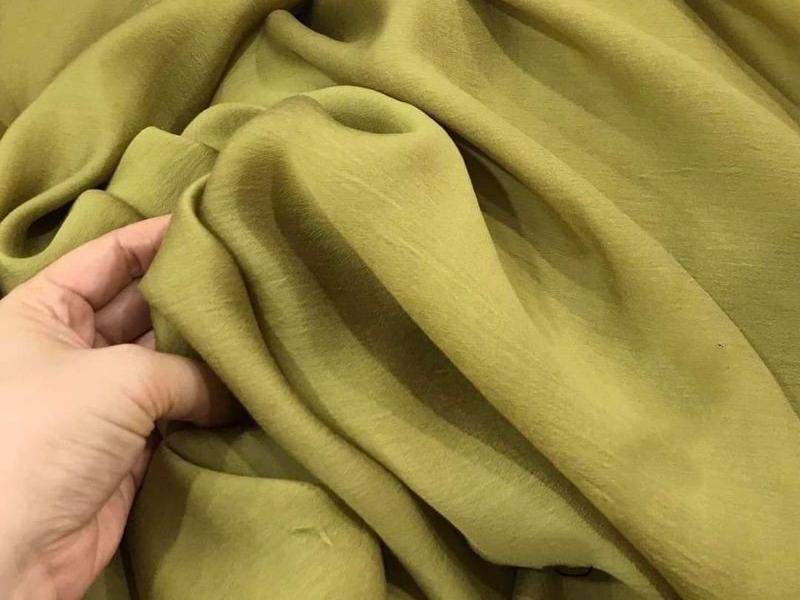
The benefits of crepe fabric
Crepe fabric offers several advantages that make it a popular choice for clothing and other textile products. Here are some of the key benefits of crepe fabric:
1. Texture: Crepe fabric has a unique texture characterized by its crinkled or pebbled appearance. This distinctive texture adds visual interest to the fabric, making it aesthetically pleasing.
2. Drape: Crepe fabric has excellent drapeability, which means it hangs and flows beautifully when used for garments. It creates a graceful and elegant look when worn, making it a preferred choice for eveningwear and formal attire.
3. Versatility: Crepe fabric comes in various weights, ranging from lightweight to heavyweight. This versatility allows it to be used for different types of clothing, including dresses, blouses, skirts, pants, and even outerwear. It can also be used for accessories like scarves and ties.
4. Wrinkle resistance: Crepe fabric has natural wrinkle-resistant properties, which helps maintain its smooth and polished appearance even after prolonged wear. This makes it an excellent choice for travel or for those who prefer low-maintenance clothing options.
5. Breathability: Crepe fabric is known for its breathability, allowing air to pass through and keeping the wearer comfortable in different climates. It is lightweight and airy, making it a suitable fabric choice for warmer seasons or tropical locations.
6. Durability: Crepe fabric is known for its durability and resistance to wear and tear. It is less prone to snagging or fraying, ensuring that garments made from crepe fabric will last for a long time with proper care.
7. Easy care: Crepe fabric is relatively easy to care for. It is often machine washable, and some variations may even be suitable for tumble drying or ironing at low temperatures, reducing the need for specialized or complicated laundry routines.
Overall, crepe fabric offers a combination of aesthetic appeal, versatility, comfort, and durability, making it a favored choice for various apparel and textile applications.
- Soft material, good elasticity: It brings the most comfort and ventilation when used. Especially, there is no discomfort when in contact with the skin for a long time.
- Durable: Products made from crepe fabric do not appear deformed or torn with frequent use.
- Light, breathable: does not cause heat or stuffiness when worn even on hot summer days. This is a special fabric material that is favored for use on hot summer days.
- Unique: with natural folds or grooves that few fabrics can do. It helps fashion items become more novel, enhancing your dressing sense.
- Keep good shape: Using crepe fabric you will not have to worry about wrinkles when wearing.
- High application: can be used in both everyday wear and interior design.
Disadvantages of crepe fabric
In addition to its numerous advantages, crepe fabric also has several drawbacks to consider. These include:

There are several disadvantages associated with crepe fabric. The first disadvantage is its susceptibility to wrinkling. Crepe fabric is prone to developing wrinkles and creases, which can be difficult to remove. This can make it challenging to maintain the fabric’s smooth and polished appearance.
Another disadvantage of crepe fabric is its delicate nature. Crepe fabric is often made from delicate fibers such as silk or rayon, which can be easily damaged. It is important to handle crepe fabric with care to avoid snagging or tearing the fabric.
Additionally, crepe fabric is known for its tendency to shrink when washed. This can pose a problem when it comes to cleaning and maintaining the fabric. It is crucial to follow the manufacturer’s instructions for washing and drying crepe fabric to prevent any shrinkage.
Furthermore, crepe fabric can be relatively expensive compared to other fabrics. This may limit its accessibility to individuals with tighter budgets. The cost of crepe fabric is influenced by factors such as the quality of the fibers used, the manufacturing process, and the brand.
Lastly, crepe fabric may not be suitable for all types of clothing. Its draping and flowing nature can be flattering for certain garments, but it may not be ideal for structured or tailored pieces. It is important to consider the desired style and fit when choosing crepe fabric for a particular clothing item.
Overall, while crepe fabric has its advantages such as its soft texture and luxurious appearance, it also comes with several disadvantages including its susceptibility to wrinkling, delicate nature, tendency to shrink when washed, higher cost, and limited suitability for certain types of clothing.
- The natural wrinkled texture is both an advantage and a disadvantage of this fabric. For those who love flatness and want to own an item made from crepe fabric, it will take a lot of time. Moreover, it will also easily return to its original state if you iron it incorrectly.
- To keep the unique wrinkles and ensure the durability of the fabric. You should wash fashion items made from crepe fabric by hand or machine wash in normal mode.
- Do not use strong detergents or pour hot water on the fabric to avoid changing the inherent structure of crepe fabric.
- When ironing, place a protective layer of fabric on top to minimize the impact that can affect the smooth surface of crepe fabric.
Crepe fabric classification
Currently, in the market, there is a wide range of crepe fabrics available, each classified based on their unique blend of fibers, manufacturing process, and structural composition. These varieties are highly sought after by consumers and include some of the following popular crepe fabrics:
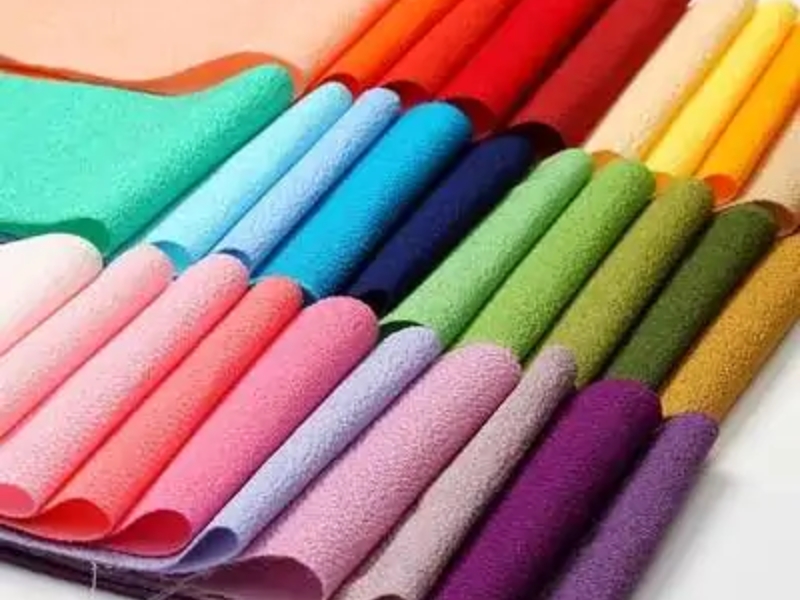
Classification of Crepe Fabric:
Crepe fabric is a type of fabric that is characterized by its unique texture and appearance. It is classified based on various factors such as the type of fibers used, the method of production, and the desired final effect.
1. Fiber Composition:
Crepe fabric can be classified based on the type of fibers used in its production. It is available in a wide range of fiber compositions such as silk, wool, cotton, polyester, rayon, and synthetic blends. Each type of fiber imparts different characteristics to the fabric, such as silk crepe for its luxurious feel and drape, or polyester crepe for its durability and wrinkle resistance.
2. Weave Structure:
Crepe fabric can be woven using different techniques, which affects its texture and appearance. The most common weave structures used for crepe fabric include plain crepe, crepe de chine, crepe georgette, and double-faced crepe. Each weave structure creates a different level of crinkling and texture, resulting in unique fabric qualities and draping abilities.
3. Finishing Process:
The finishing process applied to crepe fabric can also affect its classification. Often, crepe fabrics undergo additional treatments such as chemical finishing to enhance their characteristics. For example, sand-washing or enzyme washing can be applied to give the fabric a soft and worn-in look, while heat setting can improve the fabric’s ability to retain its texture and resist creasing.
4. Design and Pattern:
Crepe fabric can be further classified based on the design and pattern printed or incorporated into the fabric. This includes a variety of options such as solid-colored crepe, floral prints, geometric patterns, and abstract designs. The design and pattern selection can greatly influence the overall look and feel of the fabric.
In conclusion, the classification of crepe fabric takes into account factors such as fiber composition, weave structure, finishing process, and design pattern. Understanding these classifications can help consumers make informed choices based on their preferences and specific requirements for their projects or garments.
- Crepe de Chine fabric: is a fabric woven from thin, light silk, providing softness and coolness. This material is often used in sewing women’s clothing such as shirts, dresses,…
- Crepe Georgette Fabric: This is a high-quality crepe fabric that is thinner and more elastic than Crepe de Chine fabric. Therefore, it is often used to make evening dresses, party dresses or costumes for the upper class.
- Crepe Satin Fabric: is a fabric that combines crepe and satin with the goal of creating a soft, sparkling and luxurious fabric.
- Crepe Jersey Fabric: is a type of fabric woven from polyester or cotton fibers that creates superior elasticity and absorbency. This fabric is suitable for use in sportswear.
- Crepe Anglaise Fabric: : is a black and white cerep fabric commonly used by English farmers.
- Crepe Crepon Fabric: is a type of fabric woven from strong fibers so it has high weight and durability. This is a popular fabric material from the 19th century to the present.
- French Crepe Fabric: With its soft, supple properties, French crepe fabric is used in making lingerie (bras). man underwear female).
- Crepe Plisse Fabric: This fabric has gone through several processing steps to create the unique slightly wrinkled texture of crepe. This material is often favored by designers for use on the runway or in evening wear.
Crepe fabric is widely used in modern-day clothing, drapery, and upholstery applications.
Crepe is a highly popular fabric that is extensively utilized in various industries and applications. This versatile fabric finds its use in a multitude of ways, including but not limited to:
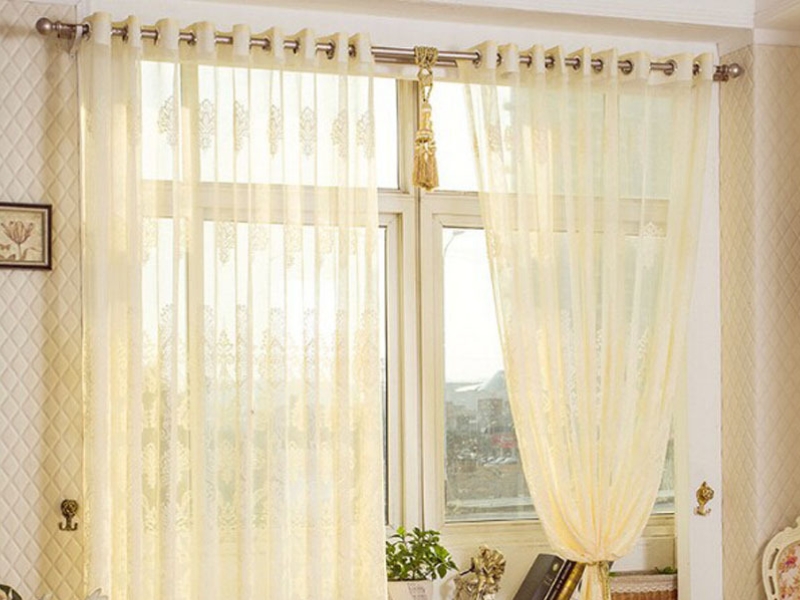
The versatile crepe fabric has found numerous applications in various aspects of modern life. This lightweight fabric, known for its distinctive crinkled texture, is used extensively in fashion and apparel. It is commonly used in the production of dresses, blouses, skirts, and pants, offering a fluid drape and a stylish look.
Moreover, crepe fabric is also utilized in home decor and interior design. Its elegant and sophisticated look makes it a popular choice for curtains, upholstery, and decorative accessories. The fabric’s ability to resist wrinkles and hold its shape well over time adds to its appeal in these applications.
In addition, crepe fabric is highly valued in the field of costume design for both theater and film productions. Its wrinkle-resistant nature allows costumes to maintain their form even during prolonged use, making it ideal for performers requiring flexibility and ease of movement.
Beyond the realm of fashion and design, crepe fabric has practical uses in healthcare and medical fields. Its lightweight and breathable properties make it an excellent choice for producing medical gowns, bandages, and surgical wraps, providing comfort and protection for patients and healthcare professionals alike.
In conclusion, the applications of crepe fabric in today’s life are vast and varied. From fashion and home decor to costume design and healthcare, this versatile fabric continues to play a pivotal role in enhancing our daily lives.
- Everyday wear: Possessing soft properties, good elasticity brings the best comfort. Therefore, this material is widely used in sewing skirts, dresses, shirts,… In addition, the ability to keep good shape and unique wrinkles help to express the impressive fashion sense of the wearer.
- Evening dress, wedding party: is a fabric with luxurious, unique beauty and outstanding elasticity. Therefore, high-quality fabrics such as Crepe Satin and Crepe Back Satin are favored for use in party dresses, evening gowns or wedding dresses.
- Interior design: with unique design, impressive crease ability. Crepe fabric is used for curtains, bed sheets, pillow covers,… it brings a unique and impressive style to the homeowner.
- Accessory: with a soft, smooth surface and special crease-creating ability. Crepe fabric is used for the production of handbags, jewelry, fashion accessories,…
Here is the answer to the question “What is crepe fabric?” and a detailed explanation of its applications in various aspects of life. We hope that the information provided above has been helpful to our readers in understanding this type of fabric. Additionally, we encourage you to stay connected with us for more updates on the latest fashion news by following our 5S guidelines.
Fashion Bandung specializes in offering a wide range of fashionable clothing and accessories for men. Our store is dedicated to providing the latest trends and styles in men’s fashion. From casual wear to formal attire, we have a diverse selection to cater to every man’s unique taste and preference. Our collection includes top-quality clothing items such as shirts, pants, jackets, and suits, as well as accessories like belts, ties, and shoes. Whether you are looking for a complete outfit or individual pieces to enhance your wardrobe, Fashion Bandung has you covered. We ensure that our products are of the highest quality, and our team is committed to delivering exceptional customer service. Visit us today to explore our extensive range of men’s fashion and elevate your style to new heights.

Editor: Bui Thi Hieu
Bui Thi Hieu is an experienced editor with a strong command of the English language. With a keen eye for detail and a passion for writing, she has honed her skills over the years to deliver high-quality editorial services. Bui Thi Hieu is well-versed in various genres and styles, allowing her to edit a wide range of content, from articles and blog posts to manuscripts and academic papers.
As an editor, Bui Thi Hieu values clear and concise writing, ensuring that the message of the text is effectively conveyed to the intended audience. She pays careful attention to grammar, spelling, punctuation, and sentence structure, making necessary revisions to enhance the overall readability and cohesiveness of the work. Bui Thi Hieu also provides constructive feedback, offering suggestions for improvements and helping authors strengthen their writing skills.
Bui Thi Hieu is dedicated to meeting deadlines and prioritizing client satisfaction. She understands the importance of maintaining the author’s unique voice while enhancing the clarity and impact of their work. Whether it’s polishing a single article or editing an entire manuscript, Bui Thi Hieu is committed to delivering top-notch editorial services tailored to the specific needs and goals of each client.
With Bui Thi Hieu as your editor, you can expect a meticulous approach, a strong attention to detail, and a commitment to helping you achieve your writing objectives. Trust Bui Thi Hieu to transform your writing into polished, professional, and engaging content that captivates readers.

